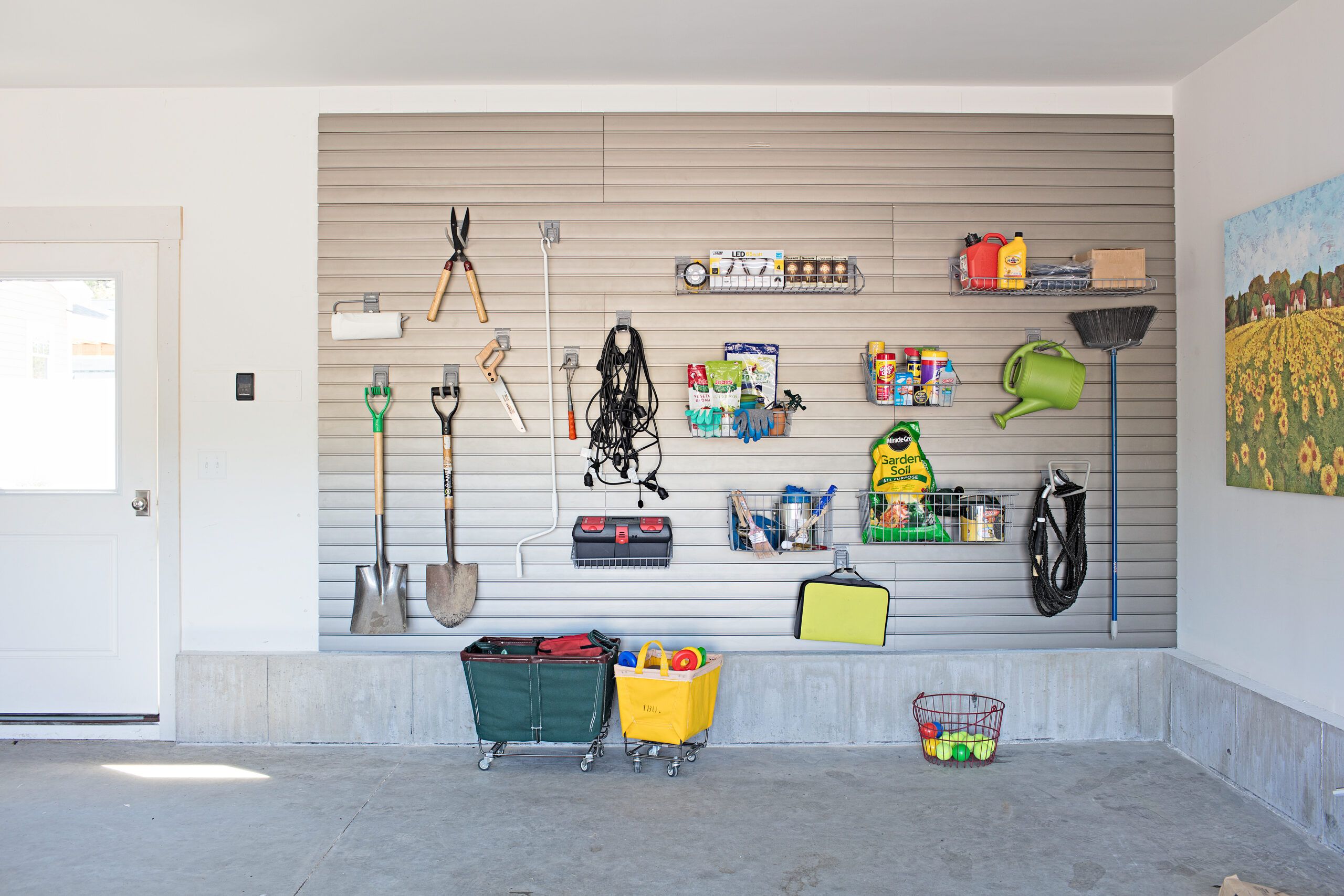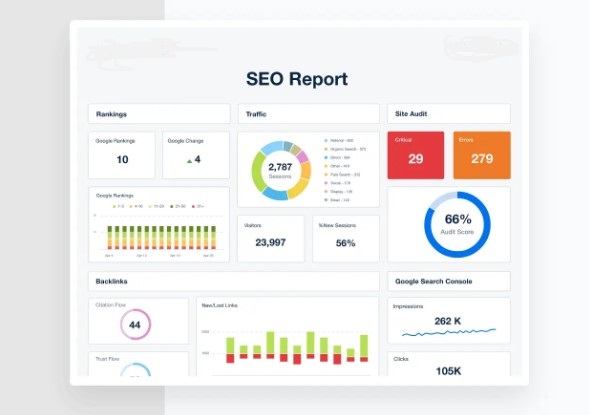Designing a single-page website in 2024 requires a seamless user experience and engaging visuals to capture and retain visitor attention. With limited content, efficient navigation, and strategic layout, a single-page website can effectively communicate information and drive conversions.
As we enter a new era of web design, it’s important to consider trends in user behavior and technology advancements that can optimize the functionality and aesthetics of single-page designs. In this guide, we’ll explore the key elements and best practices for creating a successful single-page website in 2024.
From a strong visual identity to thoughtful navigation to mobile responsiveness, we’ll cover all the essential components for designing a website that delivers results. So, let’s dive in and discover how to make your single-page website stand out in the digital landscape.

Credit: www.thisoldhouse.com
Factors To Consider Before Designing A Single-Page Website
Single-Page Website Design Guide In 2024
As we move into 2024, there’s no denying that single-page websites have become increasingly popular over the years. Their simple, minimalist design makes them more accessible, and they can be a great choice for businesses looking to create a strong online presence.
However, before diving into single-page website design, there are a few factors you need to consider. We’ll be discussing some of the key factors that you need to keep in mind when designing a single-page website.
Researching Audience Needs And Preferences
One of the first things you should do before designing a single-page website is to conduct thorough research on your audience’s needs and preferences. This will help you create a site that will not only attract visitors but also keep them engaged.
- What are your target audience’s interests and pain points?
- What kind of content do they prefer? Long-form articles, visuals, or videos?
- What design elements do they find appealing?
- What kind of website experience are they looking for?
Understanding your audience will help you design a single-page website that resonates with them and meets their needs.
Defining Website Goals
Before you start designing, you need to define the goals of your website. What are you trying to achieve?
- Increase sales
- Reviews and reputation management
- Boost brand awareness
- Encourage visitor engagement
By defining your goals upfront, you’ll have a better idea of what kind of design elements you’ll need to include to achieve these goals.
Identifying Key Features And Content
Once you know your audience and goals, it’s time to identify the key features and content your website needs.
- What are the most important pieces of content that you need to include on your website?
- What kind of visuals do you need to use to make your website appealing?
- What calls to action (ctas) do you need to include to encourage engagement?
- What other features or elements (such as navigation) should you include to make your website user-friendly?
It’s important to include only the essential elements to avoid cluttering your website and ensuring that visitors can easily find what they need.
Analyzing Website Traffic And Performance Metrics
Finally, it’s important to analyze your website’s traffic and performance metrics regularly. This will help you identify what’s working and what isn’t, and make changes accordingly to improve your website’s performance.
- Traffic sources and referral sites
- Number of page views and bounce rate
- Time spent on site and most popular pages
- Conversions (if applicable)
Analyzing these metrics will help you make data-driven changes to your website, ensuring that it’s always performing at its best.
Designing a single-page website requires careful consideration of several key factors. By researching your audience’s needs and preferences, defining your website goals, identifying key features and content, and analyzing website traffic and performance metrics, you can create a website that engages visitors and delivers results.
Essential Features Of Single-Page Website Design
Single-page website design guide in 2023: essential features of single-page website design
If you’re thinking of designing a single-page website, you should pay attention to its essential features to ensure a seamless user experience. A single-page website is an excellent way to showcase your products or services without overwhelming your site visitors with too much information.
In this guide, we will discuss the key features of single-page website design.
Responsive And Adaptable Design
Having a responsive and adaptable design is critical for any website, and it becomes even more important for a single-page website. People will access your website via different devices with varying screen sizes, so your website should be designed for all devices.
It should adapt to any screen size and resolution without compromising the user experience.
Here are some key features of a responsive and adaptable design that you should consider:
- Mobile-first design
- Automatic resizing of images and text
- Easy navigation on mobile devices
- Consistent design across all devices
Engaging And Interactive User Experience
Since a single-page website aims to convey all information on a single page, it’s essential to make the user experience engaging and interactive. You should design your website in a way that captures the attention of your site visitors and keeps them engaged throughout their visit.
- Use high-quality images and videos to engage the visitors
- Use animations and interactive elements to highlight important information
- Create interactive forms to collect data from your visitors
- Use social media widgets to make it easy for visitors to share your content
Clear And Concise Messaging
Clear and concise messaging is crucial when designing a single-page website. You have limited space to convey your message, so you should aim to make every word count. Your messaging should be clear and concise to ensure that visitors can easily understand what your website is all about.
- Use headlines and subheadings to convey the most important messages
- Use bullet points to make information easy to scan
- Use short paragraphs with simple language
- Use call-to-actions (ctas) to encourage visitors to take action
High-Quality Visual Elements
High-quality images and visual elements are essential for a single-page website. They help to break up text and make the website visually appealing. Visitors are more likely to stay on your website if it’s visually appealing and engaging.
- Use high-quality images that are relevant to your website
- Use videos and animations to convey important information
- Use an appropriate color scheme that is consistent throughout the website
- Use whitespace effectively to make the website feel less cluttered
Simple And Intuitive Navigation
The navigation of your website should be simple and intuitive so that users can find what they’re looking for quickly. Since all the information is presented on a single page, you need to make sure that the navigation is easy enough for visitors to use effectively.
- Use a sticky navigation menu that follows the user as they scroll down the page
- Use anchor links to allow visitors to jump to specific sections of the website
- Use a clear and simple menu that is easy to understand
- Make sure that navigation links are easy to click on both desktop and mobile devices
Designing a single-page website requires careful attention to essential features to ensure a seamless user experience. Remember to consider responsive and adaptable design, engaging and interactive user experience, clear and concise messaging, high-quality visual elements, and simple and intuitive navigation when designing your website.
Best Practices For Structure And Layout
Single-Page Website Design Guide In 2024
As more and more people surf the web on their mobile devices, single-page websites are gaining in popularity due to their simplicity and ease of use. For the best single-page website design practices that will be relevant in 2023, we recommend focusing on planning and organizing content, splitting up sections, creating visual hierarchy, balancing white space and content, and ensuring seamless scrolling to keep your audience engaged.
Below are some tips to guide you.
Planning And Organizing Content
When it comes to creating an excellent single-page design, planning and organizing content is of utmost importance. With just one page, every word must count, and every element must serve a purpose.
- Identify your key messages and prioritize them.
- Break down your key messages into smaller sections that can be tackled concisely.
- Understand your audience and tailor the content to them.
- Keep your copy brief and to the point.
- Use visuals and multimedia to convey your messages effectively.
Splitting Up Sections
Breaking your content down into smaller, more manageable sections is the best way to keep it organized and easy to navigate for your audience.
- Group similar pieces of information together.
- Use subheadings to identify each section clearly.
- Ensure each section is self-contained, with a clear beginning, middle, and end.
- Use clear and concise labels for each section.
Creating Visual Hierarchy
Visual hierarchy is critical in guiding your audience’s eye from one section of your page to another.
- Use contrasting colors and typography to emphasize important content.
- Align elements to create a visual flow from one section to another.
- Use white space to create a clear separation between sections.
- Make sure your site’s navigation is intuitive and easy to follow.
Balancing White Space And Content
To create an aesthetically pleasing and easy-to-read website, the white space, or negative space, is just as important as the content itself.
- Don’t be afraid to leave generous amounts of white space.
- Ensure that the white space is consistent throughout your page.
- Use white space to create a visual separation between different types of content.
- Make sure the content doesn’t feel cramped or cluttered.
Ensuring Seamless Scrolling
One of the joys of single-page websites is the seamless scrolling experience they provide.
- Make sure each section of your page is easily accessible.
- Don’t overload your page with too much content.
- Optimize your page’s load time to prevent any lagging or delays.
- Test your website on different devices to ensure a consistent experience.
These best practices for structuring and laying out single-page websites are essential for creating a great user experience. By following these guidelines, you’ll be able to engage your audience, keep them reading, and ensure that they come back for more.
Optimization Techniques For Single-Page Websites
With single-page websites gaining popularity in 2023, it’s essential to know the optimization techniques that can make your website stand out. These techniques will help you in increasing website traffic and achieving better user engagement.
Optimization For Search Engines
To make your single-page website seo-friendly, you need to optimize it for search engines.
- Research keywords and use them effectively in title tags, meta descriptions, and content.
- Keep your website content fresh and updated regularly.
- Make sure your website has a clean code structure and mobile-friendly design.
- Use internal linking to help search engines understand the structure of your website.
Tips For Improving Website Load Time
Faster load times can have a major impact on website traffic and user engagement.
- Reduce the file size of your images and use jpeg or png images instead of gifs.
- Minimize http requests by reducing the number of scripts and stylesheets used.
- Use a content delivery network (cdn) to improve load time by loading content from nearby servers.
- Implement caching to reduce server load and improve page speed.
Techniques For Reducing Bounce Rates
A high bounce rate indicates poor website engagement.
- Use eye-catching headlines and images to keep users engaged.
- Include internal links to other relevant pages on your website.
- Use responsive design to optimize for different screen sizes.
- Ensure your website has a clear and intuitive navigation structure.
Strategies For Increasing Conversions
Increasing conversions leads to better business outcomes.
- Use a clear and visually appealing call-to-action (cta) that stands out on the page.
- Design the website with a clear message and purpose in mind.
- Keep forms simple and easy to fill out.
- Ensure that the website is user-friendly and easy to navigate.
With these techniques, you can optimize your single-page website to make it stand out in 2023. Employing the right optimization strategies can increase traffic, engagement, and conversion rates to achieve the desired goals.
The Future Of Single-Page Website Design
Single-page website design has been gaining popularity for the past few years. It’s an approach that’s been used for a variety of online platforms, including personal blogs and online stores. One of the significant benefits of single-page website design is that it provides users with a seamless browsing experience within a single page.
But what’s in store for the future of single-page website design? In this section, we will discuss the emerging trends and technologies in single-page website design, predictions for the future of single-page website design, and recommendations for staying ahead of the curve.
Emerging Trends And Technologies
The digital world never sleeps, and so do the trends and technologies.
- Increased use of animations: Animations add personality to a website, making it memorable and engaging to the user. Expect to see more websites with animations as a primary feature.
- Streamlined interfaces: As more and more devices are being used to browse the internet, single-page website design has to adapt to various screen sizes. Expect to see minimalistic and streamlined interfaces that can adjust to different screens seamlessly.
- Voice interfaces: With the rise of voice assistants such as amazon’s alexa and google assistant, voice interfaces in web design are becoming popular. Expect to see more websites with voice assistance in the future.
Predictions For The Future Of Single-Page Website Design
Here are some predictions for the future of single-page website design:
- Websites that are focused on user experience: In the past, websites have been designed as a canvas for designers to showcase their creativity. But the future is all about user experience. Websites that provide seamless user experience will be highly valued.
- More personalized websites: As technology continues to advance, users will expect more personalized experiences. Single-page website design will need to incorporate ai-driven algorithms that personalize the user’s experience based on their browsing behavior.
- Advanced mobile optimization: As mobile browsing takes over, single-page website design will need to provide users with a seamless mobile experience.
Recommendations For Staying Ahead Of The Curve
To stay ahead of the curve in single-page website design, you should:
- Incorporate innovative designs and features: Innovation has been the driving force behind single-page website design growth. Continuous adoption and implementation of innovative design features and trends will keep your website up-to-date.
- Focus on user experience: Users’ needs should be the primary focus in web design. Ensure that your single-page website provides a seamless and engaging user experience.
- Stay up-to-date with emerging technologies: The technology world is always evolving. Staying up-to-date with the latest web design technologies and trends will help you keep up with the curve.
The future of single-page website design is full of exciting and innovative possibilities. Websites that offer engaging user experiences, seamless navigation, minimalistic designs, and personalized content will stay ahead of the curve. Incorporating emerging technologies in web design and staying up-to-date with advanced mobile optimization will give your website an edge in the digital landscape.
Frequently Asked Questions For Single-Page Website Design Guide In 2023
What Is A Single-Page Website Design?
A single-page website design is a website that contains all its content on one web page without separate pages for each section. This type of website design can improve the user experience by allowing users to navigate easily from section to section without reloading the page.
What Are The Advantages Of A Single-Page Website Design?
The advantages of a single-page website design are that it loads faster, looks more modern, keeps users engaged, and is easy to navigate. This type of website design is also perfect for businesses that have content or services that can be displayed on a single page.
How Can I Make A Single-Page Website Design Look Good?
You can make a single-page website design look good by using a minimalist design, using high-quality images, choosing the right color scheme, and using white space effectively. You should also use headings and subheadings to break up content and make it easier to read.
What Are The Key Elements Of A Single-Page Website Design?
The key elements of a single-page website design are a strong brand identity, clear navigation, an attention-grabbing headline, high-quality images, a clear call-to-action, and easy-to-read content. You should also ensure that the website is mobile-friendly, loads quickly, and is seo optimized.
What Are Some Examples Of Single-Page Websites?
Some examples of single-page websites include apple iphone 12 pro, dropbox paper, and coca-cola. These websites showcase how you can create a dynamic website with a single page. Other examples include single-page portfolios and landing pages for products or events.
Conclusion
As the internet evolves, so does web design. Single-page website design is becoming increasingly popular, and for good reason. It simplifies navigation, offers a better user experience, and a more modern feel. By focusing on a single page, website designers can highlight the essentials of a brand while minimizing the clutter.
Now that you have a comprehensive understanding of single-page website design, you can confidently explore the possibilities for your next web project. Keep in mind that a well-designed single-page website requires careful planning, adherence to design principles, and attention to seo.
Single-page website design is a great option for businesses seeking a modern, user-friendly approach to their online presence. By following this guide, you can create a single-page website that’s functional, aesthetically pleasing, and optimized for both users and search engines.






One Response
I’m gone to tell my little brother, that he should also go
to see this webpage on regular basis to take updated from hottest news update.